Landscape Design
Patio of the Week: Casual Outdoor Living for a Family of 4
A San Francisco landscape design-build pro found on Houzz adds decks and retaining walls to manage a sloped yard
For a family living in San Francisco’s Noe Valley neighborhood, having room to gather outside with friends and family was the top priority when they renovated their previously underused backyard. “They’re kind of outdoorsy people, and they wanted space to grow food and relax outside,” says landscape designer Richard Radford of The Garden Route, a company the homeowners found and hired through Houzz.
On top of that, the homeowners have two school-age children and wanted to create a simple, kid-friendly space that would support easy outdoor living for all ages. “They always wanted to develop the space in a way that allows for maximum outdoor life,” Radford says.
On top of that, the homeowners have two school-age children and wanted to create a simple, kid-friendly space that would support easy outdoor living for all ages. “They always wanted to develop the space in a way that allows for maximum outdoor life,” Radford says.
Need a pro for your landscape design project?
Let Houzz find the best pros for you
Let Houzz find the best pros for you
Before: “To start with, the space was unusable and untenable,” Radford says. There was a flagstone patio and an old rubble stone wall. A skinny staircase led from the house down to the yard. Thanks to the renovation, with the exception of the upper lawn and some existing mature trees, “it’s pretty much a fresh space,” Radford says. “We had to scrap the whole place.”
After: A new set of stairs leads from the house down several feet to the yard. Radford designed the stairs to be 5 feet wide so people can walk side by side on them or use them as extra seating. A stainless steel cable railing keeps the design feeling uncluttered and light. “They were keen on having the space feel open,” Radford says.
The staircase is clad in ipe wood, but the structural component is pressure-treated wood, with 3-by-2-inch posts that go deep into concrete piers. The posts are also clad in ipe wood. A concealed door under the stairs leads to outdoor storage.
Find a landscape designer on Houzz
The staircase is clad in ipe wood, but the structural component is pressure-treated wood, with 3-by-2-inch posts that go deep into concrete piers. The posts are also clad in ipe wood. A concealed door under the stairs leads to outdoor storage.
Find a landscape designer on Houzz
Decks and wood retaining walls run through the yard, adding warm contemporary style while also managing its challenging terrain. “Lots of invisible walls hold up the property,” Radford says. The neighboring property sits 5 feet below this lot, and the yard slopes 5 feet up from the area closest to the house to the back of the lot. As mentioned, even from the house to the yard is a drop of several feet.
Instead of choosing a taller single retaining wall that would have addressed all of the height changes at once, the firm used multiple 2- to 3-foot-tall walls to soften the various elevation changes. “Having these elevation changes creates a little character and balance,” Radford says. They add opportunities for smaller gathering areas in the yard and allow for an easy flow between spaces without any abrupt height changes.
Instead of choosing a taller single retaining wall that would have addressed all of the height changes at once, the firm used multiple 2- to 3-foot-tall walls to soften the various elevation changes. “Having these elevation changes creates a little character and balance,” Radford says. They add opportunities for smaller gathering areas in the yard and allow for an easy flow between spaces without any abrupt height changes.
In designing the terraces, Radford balanced the physical requirements of the site with solutions that enhanced the space. “There is a little bit of ‘form follows function,’” he says.
For example, a sunken lounge area sits closest to the house, providing a sheltered place to relax and bringing the design down to ground level. The surrounding retaining walls shelter the space from wind and create a more intimate feel. An ipe-clad cantilevered bench offers seating near a concrete fire bowl (which is shown covered in this photo). The bench is bolted to the retaining wall’s posts behind it.
For the patio’s paving, the designer used gray basalt rock dry-laid over a permeable substrate with one-eighth-inch joints. “We wanted a free-draining patio,” Radford says, which means water drains directly through the joints to the ground, instead of being directed off-site to storm drains. “We want the water to infiltrate and get back into the water table,” he adds.
The ipe-clad pressure-treated-wood retaining walls seen throughout the project also have all been carefully engineered for drainage. Each wall is backed with a Mel-Drain system by W.R. Meadows. “The bottom of the walls have perforated 4-inch drain lines wrapped in fabric and crushed gravel to remove hydrostatic pressure from behind the walls,” Radford says.
Fire bowl: Hemi, 36 inches, Solus
For example, a sunken lounge area sits closest to the house, providing a sheltered place to relax and bringing the design down to ground level. The surrounding retaining walls shelter the space from wind and create a more intimate feel. An ipe-clad cantilevered bench offers seating near a concrete fire bowl (which is shown covered in this photo). The bench is bolted to the retaining wall’s posts behind it.
For the patio’s paving, the designer used gray basalt rock dry-laid over a permeable substrate with one-eighth-inch joints. “We wanted a free-draining patio,” Radford says, which means water drains directly through the joints to the ground, instead of being directed off-site to storm drains. “We want the water to infiltrate and get back into the water table,” he adds.
The ipe-clad pressure-treated-wood retaining walls seen throughout the project also have all been carefully engineered for drainage. Each wall is backed with a Mel-Drain system by W.R. Meadows. “The bottom of the walls have perforated 4-inch drain lines wrapped in fabric and crushed gravel to remove hydrostatic pressure from behind the walls,” Radford says.
Fire bowl: Hemi, 36 inches, Solus
Moving farther into the yard, a deck for lounging and taking in the sun brings you up to the same level as the lawn area. A hot tub sits just a few steps away on the other side of the lawn, also surrounded by ipe decking. A wider deck off the back of the spa doubles as a sun shelf for hot tub-goers.
In the farthest corner of the yard, planters house two existing pear trees and new plantings added by the designer during the renovation. Pressure-treated wood was used for the planters’ structure, and they’re clad in ipe. Eventually, the wood will turn gray and soften the look of the yard.
The mature pear trees created a shady environment beneath them, which Radford planted with lush green shade-friendly plants, including paperplant (Fatsia japonica), oakleaf hydrangea (Hydrangea quercifolia), cast iron plant (Aspidistra elatior) and foothill sedge (Carex tumulicola). The plants were chosen to not interact poorly with the tree roots. The area is “planted in a way that honors the existing trees,” Radford says.
Additionally, the homeowners grow seasonal edibles in the rear planters.
In the farthest corner of the yard, planters house two existing pear trees and new plantings added by the designer during the renovation. Pressure-treated wood was used for the planters’ structure, and they’re clad in ipe. Eventually, the wood will turn gray and soften the look of the yard.
The mature pear trees created a shady environment beneath them, which Radford planted with lush green shade-friendly plants, including paperplant (Fatsia japonica), oakleaf hydrangea (Hydrangea quercifolia), cast iron plant (Aspidistra elatior) and foothill sedge (Carex tumulicola). The plants were chosen to not interact poorly with the tree roots. The area is “planted in a way that honors the existing trees,” Radford says.
Additionally, the homeowners grow seasonal edibles in the rear planters.
The yard is sunnier as you move closer to the house, including in the lawn area. In this portion of the yard, Radford planted Mediterranean and xeriscape plants, including lavender, sage and succulents, which will continue to grow and fill out in the yard.
The lawn is watered via an underground drip irrigation system called Eco-Mat by Hunter. Everything else in the garden gets watered though standard drip irrigation in an effort to reduce water consumption.
The lawn is watered via an underground drip irrigation system called Eco-Mat by Hunter. Everything else in the garden gets watered though standard drip irrigation in an effort to reduce water consumption.

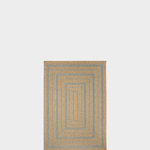
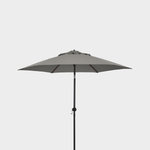
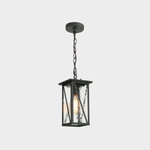
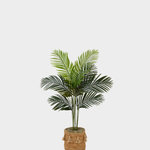
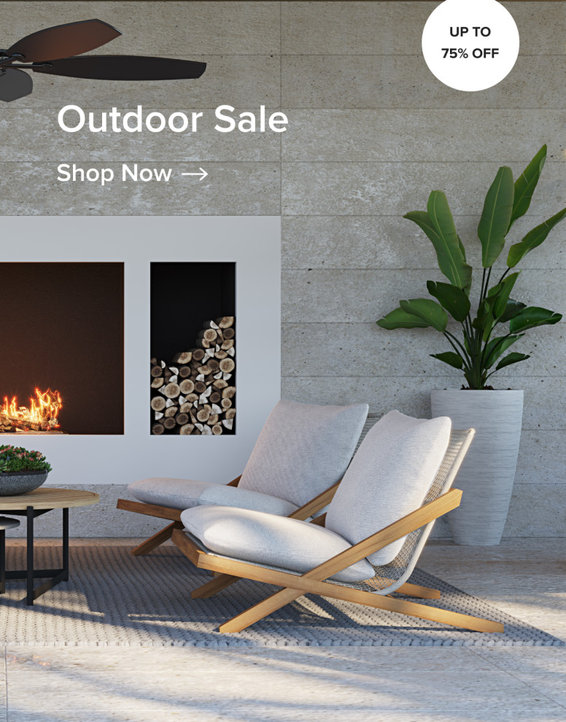
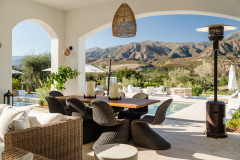












Who lives here: Two working professionals and their two school-age kids
Location: Noe Valley neighborhood of San Francisco
Size: 2,250 square feet (209 square meters); 75 by 30 feet (23 by 9.1 meters)
Designer and builder: The Garden Route
The team started with a simple design featuring lots of straight lines that wouldn’t contrast with the home’s Victorian architecture but would still feel contemporary and clean, which is what the homeowners wanted. “The design strategy was to create a more modern, contemporary feel but have it feel warm and textural,” Radford says.
A series of terraced wood decks and outdoor living spaces flow together and navigate the backyard’s uneven terrain, with room for everyone to gather with friends and for the kids to play. There’s even a gate off one deck that connects to the next-door neighbors’ house. Eventually, the plantings will be the primary factor in the backyard, softening the wood’s hard lines over time.
“It creates an environment where everyone can be outside and enjoy the space,” Radford says. “The garden is pretty simple in the way it’s designed. It’s designed with people in mind and the way that they want to live in San Francisco.”